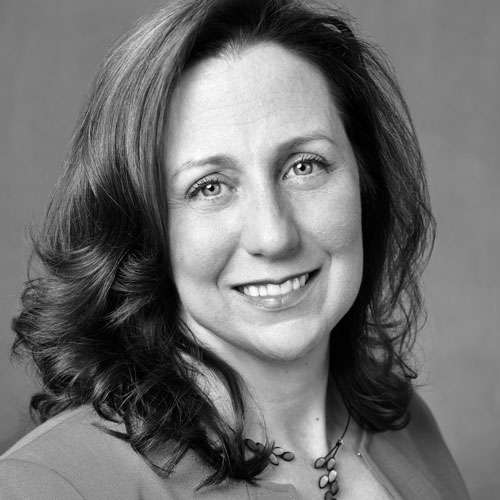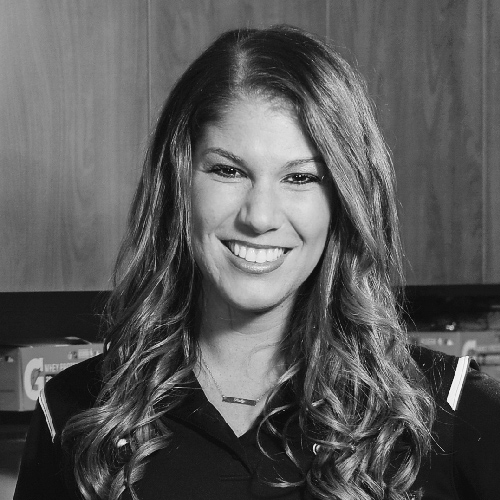A strong, inclusive team dynamic is hard to engineer, but that’s exactly what Kimberly Lounds Foster set out to do when she joined Celgene, an integrated global pharmaceutical company, in November 2016. When she joined the company as corporate vice president, global commercial supply, her team’s business process depended largely on individual leaders. But she knew that leveraging her team’s collective experience would be essential to positioning the organization for future growth. “A team is much more likely to get to an optimized solution than an individual,” she says.
So, Foster focused on defining her group’s processes and creating a more inclusive workflow. Together, they have developed systems that improve both Celgene’s supply chain and the group’s dynamic.

Foster oversees a team of more than four hundred employees, through a leadership team of nine direct reports. She partners closely with other organization leads, including the heads of development and finance. To create opportunities for thought partnership, Foster co-locates with her colleagues whenever possible. They leave their office doors open for others to drop by, and she sets aside time to walk around the office and strike up conversations several times per week. “That is a systemized way of creating unexpected encounters,” she says. “Who you will come across is not necessarily defined, but typically those conversations are the ones that tend to be most pressing.”
Foster also maintains inclusive relationships with the vendors who support her global supply chain. “By extending a level of inclusion to the vendor network, Kimberly gains additional resources to solve challenges,” says Joe Principe, vice president, strategic partnerships at Thermo Fisher Scientific. “Each of our Patheon sites host frequent client visits and often create those ‘unexpected collisions’ so that the client can build relationships with the team who is manufacturing their product.”
With a global team, however, creating encounters is not always possible. Although communicating over great distances can pose an additional challenge, it can also create an additional opportunity, she says. “There are ways to make sure you’re pulling people into the discussion,” Foster says. “Whether it’s through technology or planned face-to-face meetings, we can close the gap so our interaction is more intimate and we can come to better solutions.”
Foster’s direct leadership team has face-to-face meetings at least three times a year. When apart, they leverage technology, including video conferencing, to formally create more communication touch points and develop a stronger connection. “We’re creating the space as a team to actually get to know each other—not just your résumé, but how did you get to where you are? What’s a big influence on your career?” she says. “We know each other’s backgrounds and the experiences of what got us to where we are today, and we know that we can leverage those experiences.”
Among Foster’s influences are her parents, and especially her mother, who worked as a nurse. Her career sparked Foster’s interest in medicine from an early age. “In our household, there were all these nursing books that told you how to do various general medical procedures. That was bedtime reading for me starting, probably, around age ten,” she says. Foster followed that passion, majoring in chemical engineering and premed. Although she ultimately joined a pharmaceutical company, her experience with medicine and her Midwestern upbringing influence her approach to her work.
“Everyone has a different story, and that is an experience that helps them to make a decision,” she says. “If we understand each other a little bit more, we actually are more sensitive to the different biases that influence the decisions we make.”
As part of her team’s change journey, Foster is focusing on confronting unconscious bias—both among her team members and within herself. “I’ve tried to become a more authentic leader and to engage my team in a more authentic way. Part of that is being transparent, both with what I believe are my strengths and which areas are my personal watch-outs,” she says. “One of the reasons for building the team that way is so that they can give you different lenses to that same problem statement we’re all trying to solve.”
One framework they’re using is the SEEDS model from the Neuroleadership Institute. Each letter in SEEDS represents a bias—similarity, expedience, experience, distance, and safety. By collaboratively addressing these biases, Foster’s team is better able to make decisions. “Changing biases is close to impossible,” she says. “But if, from a process perspective, you approach how you solve a business problem in a systematic way, you can minimize the negative effects of those biases in your day-to-day work.”
Team members’ communication styles also influence their collaboration, so Foster and her team have gone through an exercise to better leverage each team member’s approach. “If you have a directive style and you’re speaking to an observer, you may change your approach a bit so that someone with an observer style hears what you’re saying and vice versa,” she says.
Quieter voices are still important, Foster says, whether that voice belongs to someone from her team or a member of a different team. “I can optimize a process, but if there’s some new thinking in the industry around good manufacturing practices that have been cited by health
authorities, my quality colleague would know that and bring that to bear,” she says.
Developing these cross-functional relationships and bringing in more perspectives ultimately leads to a better outcome, both for the team’s dynamic and for Celgene as a whole. “Creating an environment where people feel like their voices are heard and their ideas are considered and integrated is very important,” Foster says. “Your question may highlight a blind spot that we may need to address.” But every blind spot presents another opportunity for growth.

